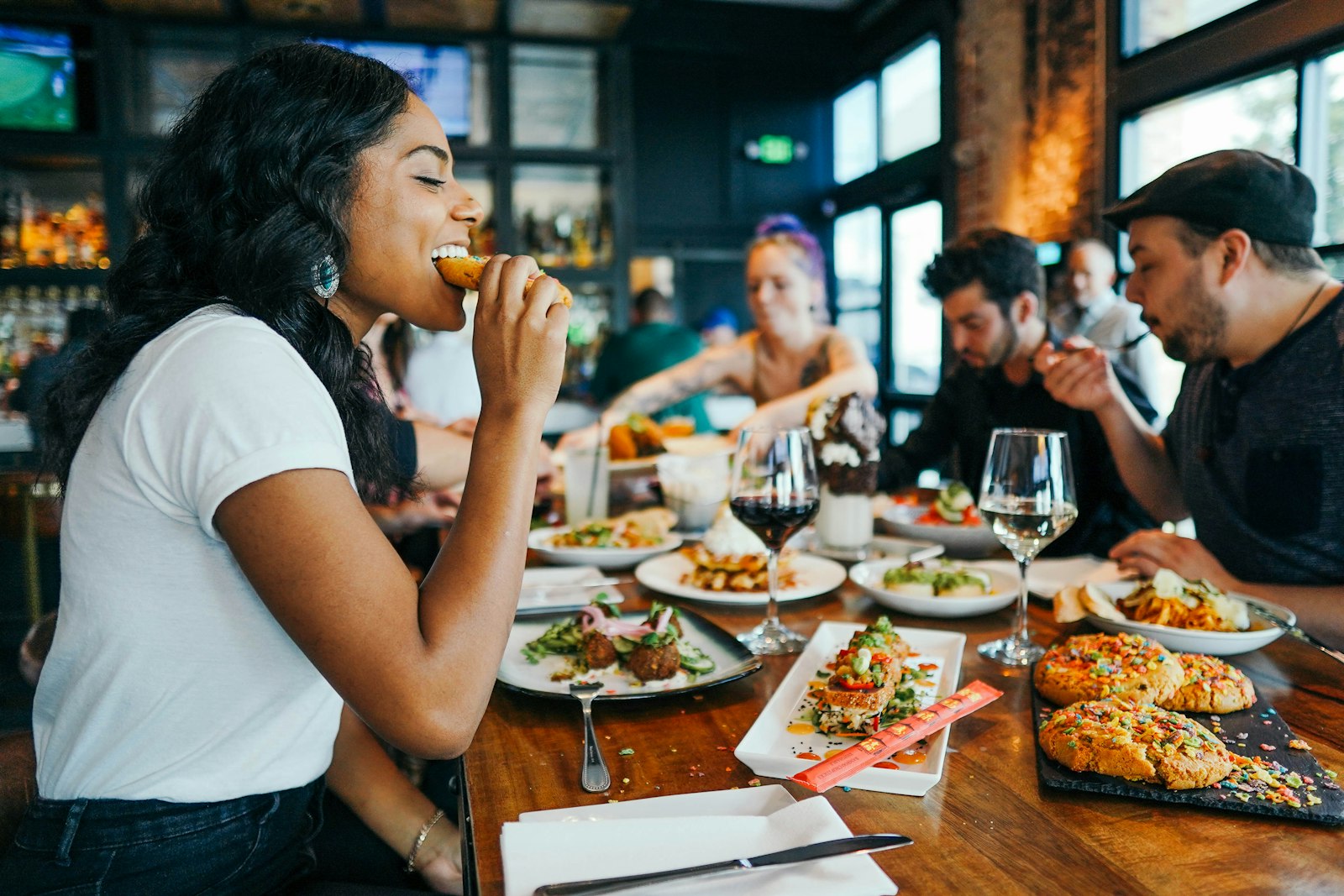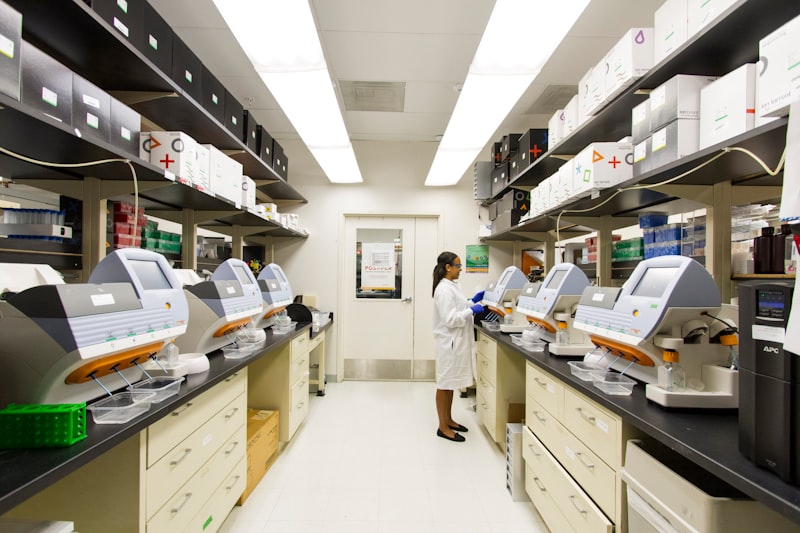Running a restaurant is no easy feat. Between cooking amazing food, providing top-notch service, and actually getting customers in the door, it often feels like you need to be a magician and juggler all in one.
I get it. I've been in the restaurant marketing game for over 15 years now, and I work with brilliant chefs and owners every day who pour their heart and soul into creating a stellar dining experience. But I see many of them struggle with the business and marketing side of things. They got into the restaurant world because of their passion for food and hospitality, not social media algorithms and conversion rates.
That's where I come in. Through years of working with renowned restaurants of all cuisines and sizes, my team and I have dialed in the latest strategies that simply work when it comes to getting more happy customers in seats. I've seen the ideas in this playbook drive major growth for gastropubs, taquerías, sushi joints, and more.
So consider me your marketing ally. I'm here to take the guesswork out of restaurant marketing so you can focus on the food, customers, and culture that called you to this industry in the first place. Let's get started!
Driving awareness through social media
Social media should be a cornerstone of your marketing strategy. Platforms like Instagram and Facebook allow you to share tempting food photos, promote specials, and engage with customers daily.
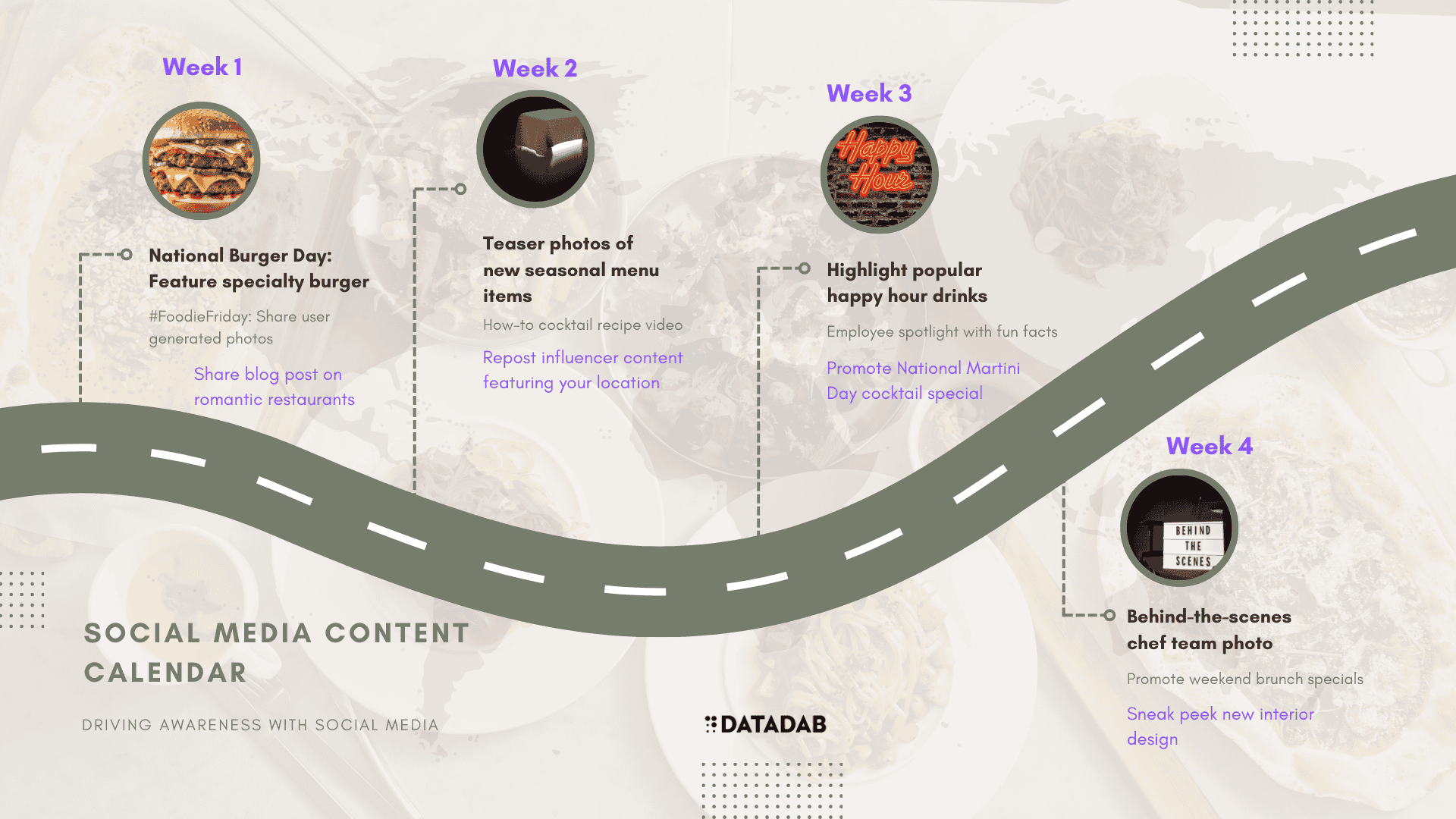
Focus on visual storytelling. According to Sprout Social, posts with images see up to 2.3X more engagement than text-only posts. Hire a professional photographer to take appetizing photos of your dishes in good lighting. Images should look natural yet play up the textures, colors, and aromas of your food.
Run targeted Facebook and Instagram ads. Facebook's detailed targeting options allow you to zero in on your ideal local customers by location, demographics, interests, and more. Use compelling creative and optimized landing pages to convert visitors into diners.
Use hashtags to join larger conversations. Research and use relevant hashtags like #foodie, #foodporn, and #InstaFood to put your content in front of broader audiences interested in dining out. Local hashtags like #FoodsofSeattle also help you stand out in your geographic area.
Partner with influencers. Work with local foodie influencers to have them feature your restaurant. Micro-influencers with 5K to 100K engaged followers are affordable to partner with and provide great ROI.
Post Short Videos. According to Hubspot, 64% of customers are more likely to purchase a product after watching branded social videos. Post short videos showcasing your dishes, chef team, and restaurant ambiance to boost engagement and sales.
| Platform | Best For | Key Features |
|---|---|---|
| Visual branding and promotions | Beautiful imagery, Stories, Shoppable Posts | |
| Driving website conversions | Precise targeting, Retargeting, Landing Pages | |
| TikTok | Reaching new Gen Z audiences | Trending challenges, Viral video potential |
Optimizing your website for conversions
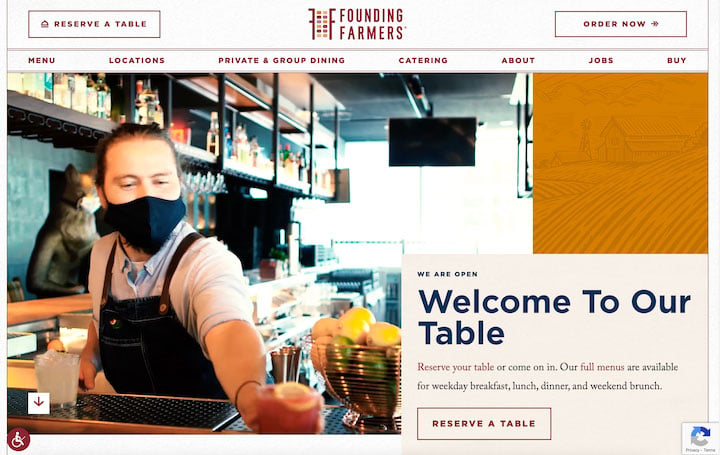
Your website is often the first touchpoint between your restaurant and potential diners. An effective site paints an enticing picture of your brand while seamlessly guiding visitors to book tables or order takeout.
Focus on visuals. Hero images, food photos, and lifestyle imagery is key for telling your brand's story on your home page and menu pages. Optimize photos to load quickly on mobile.
Craft SEO-friendly content. Quality blog content helps you rank higher in local SERPs and guides diners along their customer journey. Craft keyword-optimized articles like “The Best Birria Tacos in Dallas” or “7 Romantic Date Spots in Austin.”
Make reservations and ordering easy. Allow customers to easily book tables or order food for pickup/delivery right from your site with integrated platforms like OpenTable or ChowNow. Offer incentives for booking online like special menu items or pricing discounts.
Optimize for mobile. Over 60% of restaurant searches happen on mobile devices. Ensure your site loads quickly on mobile and the UI makes it easy for on-the-go customers to take action.
Personalize based on behavior. Identify repeat customers and website behaviors (e.g., browsing menus, reading reviews) to serve up targeted promotions, recommendations, and messaging across the site.
Getting customers in the door with local SEO
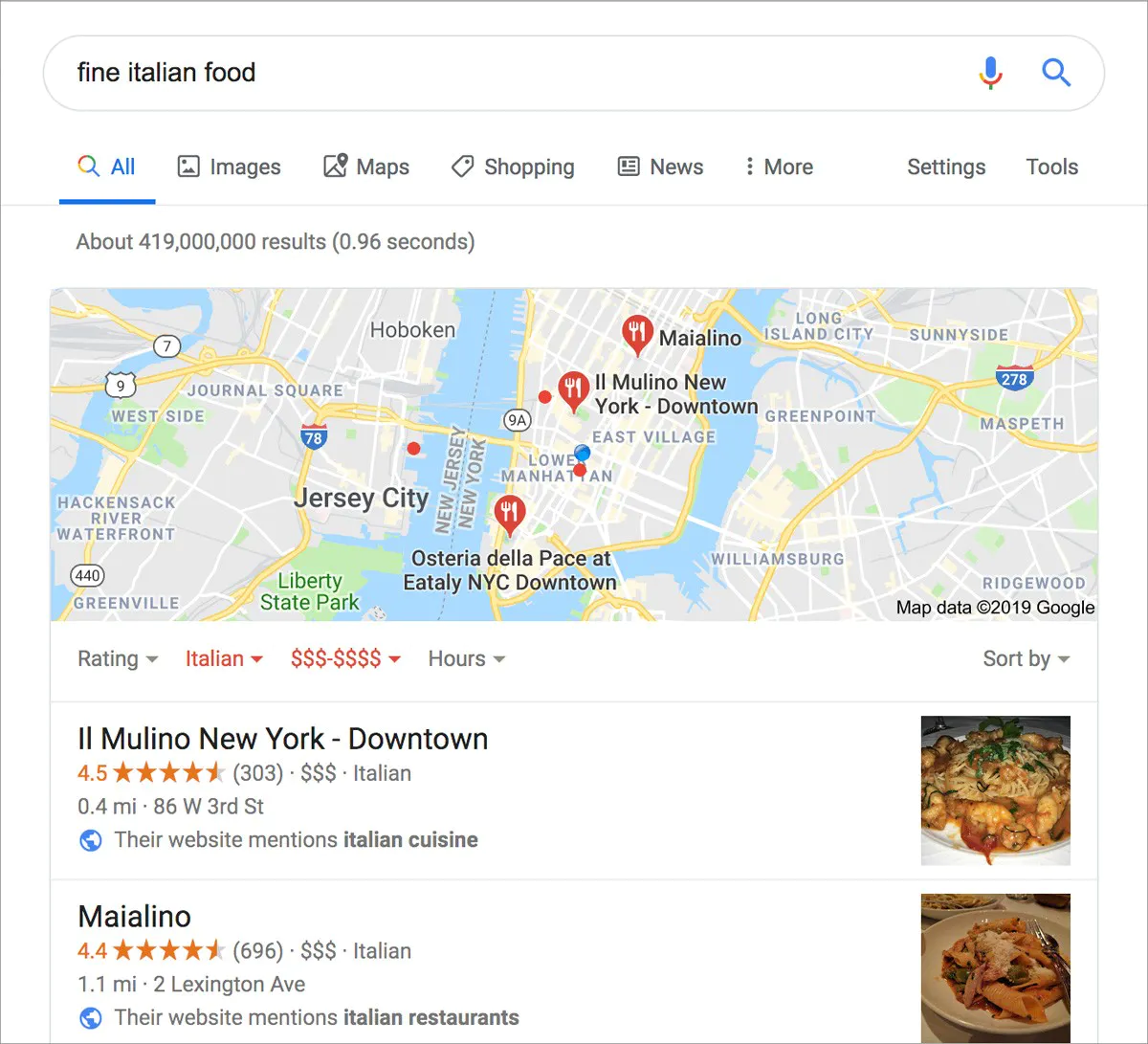
Ranking high in local SEO and review sites like Yelp helps you stand out and drive neighborhood foot traffic.
Optimize Google My Business. Completing your GMB profile with tempting photos, menu details, and special highlights helps you rank well for searches like “Japanese restaurants near me.”
Earn and display reviews. 72% of customers will visit a restaurant with a 4+ star rating. Prompt happy customers to leave reviews on Google and other platforms, and display them on your website and storefront. Train staff to gather feedback.
Offer discounts for check-ins. Encourage check-ins by offering specials like free apps or dessert for customers who check in on platforms like Yelp. This helps raise your visibility.
Publish local content. Blog articles like “The Top 10 Restaurants in Tampa Bay” help drive local SEO traffic. Partner with local publishers for earned media placements as a dining expert.
Run local ads. Geo-targeted search, display, and social media ads help you stand out to nearby customers looking for restaurants in the area. Use Hyperlocal targeting options available on platforms like Facebook.
Driving repeat business through email and SMS

Email and text message marketing create consistent touchpoints with customers to drive repeat visits and loyalty.
Collect contact info. Incentivize customers to opt-in by offering a free dessert, discounts, or special offers in exchange for their email/cell number. Train staff to prompt for contact details.
Send targeted emails. Segment your list by visit frequency, menu preferences, and more to personalize your messaging and offers. New customers may get 15% off their next visit, while loyal regulars could get a free bottle of wine.
Promote special events. Emails are ideal for promoting one-off events like trivia nights, live music, tasting menus, or holiday meals. Time email sends to drive immediate reservations.
Share blog content. Driving traffic to your blog builds SEO while positioning your restaurant as a dining expert. Include links to new food-focused articles in emails.
Leverage SMS capabilities. Send SMS alerts for last-minute table openings or prompts for reviews after a customer's visit. SMS open rates exceed 99% compared to 20-30% for email.
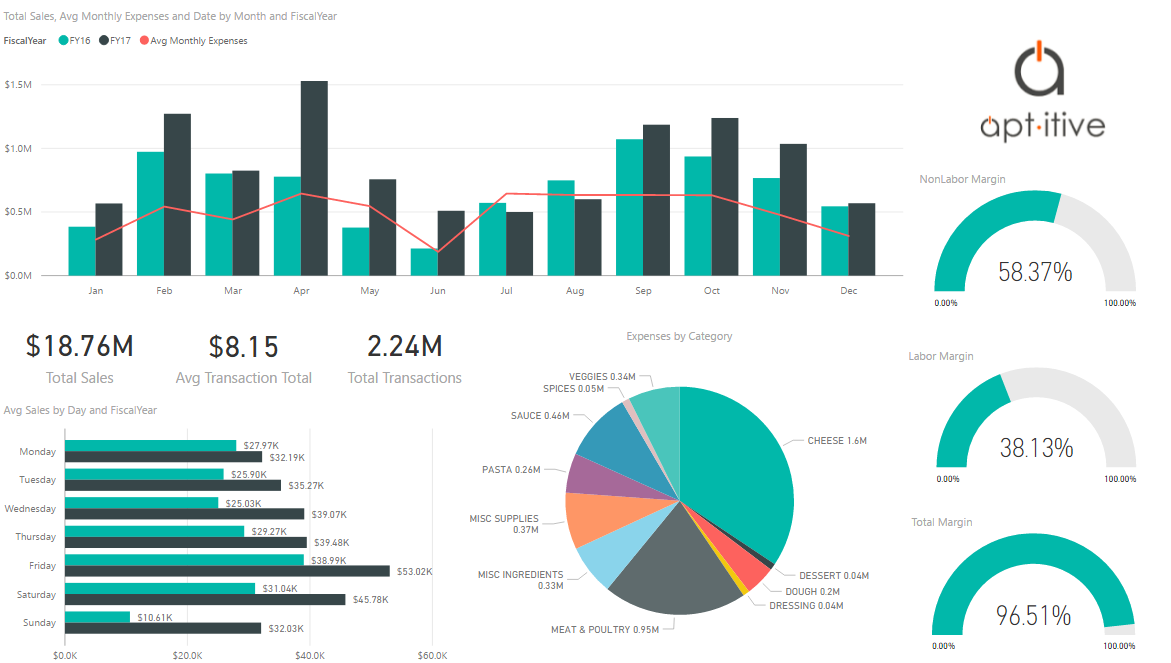
Analyzing performance with data
Understanding your marketing analytics allows you to double down on what works while cutting ineffective initiatives.
Measuring Marketing Performance
| Metric | Data Source | Use Case |
|---|---|---|
| Sales Revenue | POS System | Measure overall business growth |
| Reservations | SevenRooms, OpenTable | Track campaigns driving bookings |
| Customer Lifetime Value | CRM | Gauge customer loyalty and retention |
| Cost Per Lead | Marketing Analytics | Calculate ROI on campaigns |
Track campaign performance. Use UTM tracking parameters or campaign URLs to monitor the performance of individual initiatives like email sends, influencer posts, local ads, etc. in your analytics.
Tie campaigns to reservations. Integrate platforms like SevenRooms to connect marketing campaign performance directly to online/offline reservations. See your true ROI.
Monitor social and review sites. Analyze review volume, sentiment, ratings, and mentions on Google, Yelp, and Facebook to see how your brand perception fares over time.
Set up dashboard reports. Create customized dashboards in your business intelligence platform to easily monitor essential metrics like traffic sources, sales by menu item, customer retention rate, and marketing ROI.
Take action on insights. Use analytics learnings to optimize underperforming areas. Double down on your most effective campaigns and platforms. Test and budget for new initiatives that address weak spots.

Optimizing operations for customers
Marketing and website experience alone won't grow a loyal customer base. You also need to optimize internal operations for consistency, efficiency, and stellar service.
Gather customer feedback. Survey customers on satisfaction to identify operational issues impacting their experience, like long waits or cold food. Monitor reviews. Empower staff to flag consistent complaints.
Refine menus and ordering. Tweak menus and kitchen procedures to fix frequently messed up dishes. Streamline POS systems and online ordering platforms to reduce order errors and delays.
Improve waits and reservations. Use table management platforms to optimize seating efficiency, especially during peak times. SMS or call to confirm reservations and remind guests to reduce no-shows.
Keep menus and hours updated. Nothing is more frustrating than a diner showing up with incorrect info. Ensure your website, Google listings, and social channels all have the latest menus, prices, and operating hours.
Train and incentivize staff. Consistent, quality service keeps customers coming back. Institute thorough employee onboarding and regular upleveling. Tie bonuses and recognition to positive reviews and KPIs.
As you can see, today's leading restaurants leverage both digital and in-person channels to drive awareness, engagement, and loyalty across the entire customer lifecycle. These strategies require an integrated approach across your marketing, operations, and customer experience. With consistent optimization based on data-backed insights, your restaurant can gain an edge over the competition. Please don't hesitate to reach out if you need help implementing any of these tactics - I'd be happy to advise you based on learnings from top agency clients across the industry.
FAQ
What are the first steps I should take to improve my restaurant's marketing?
The foundation of great marketing is nailing your branding, messaging, and core value proposition. Start by clearly defining your restaurant's unique identity and what sets you apart. Map out your brand messaging, personality, ideal customer, and what experience you provide diners. This brand strategy should flow through your marketing.
Next, look at your owned media - update your website to be on-brand and highlight your differentiation. Build out engaging profiles on social media and Google My Business. Be sure your branding and messaging are consistent across all platforms.
From there, you can begin creating and distributing content through both organic and paid initiatives. Content and campaigns will perform much better when grounded in a solid brand and messaging foundation.
How much should I budget for restaurant marketing initiatives?
A good benchmark is targeting 5-10% of your annual gross revenue for marketing spend. Of course, your budget can be higher or lower depending on business goals, stage of growth, and current sales. Early on, focus on organic marketing initiatives to establish your brand and prove out your concept.
Allocate budget across social media advertising, programmatic ads, influencer collaborations, retention tools like email service providers, any agency or freelance fees, and management tools. Ensure you have resources to produce quality creative assets - compelling visuals are key across digital and print. Continually optimize spend by tracking marketing performance in your POS, reservations, and analytics.
What types of social media ads work best for restaurants?
On platforms like Facebook and Instagram, lean into detailed targeting capabilities to reach your ideal local diners. Target by location, demographics, interests, and behaviors. For example, target people within 5 miles who are ages 25-45, interested in wine and dining out, and have searched for restaurants recently.
Video and image ads tend to see higher engagement and conversion versus text-only. Showcase mouthwatering food and drink visuals, upbeat dining ambiance, or chef stories. Retarget visitors who engage with your website or ads.
Leverage lead generation and appointment booking ad formats to drive reservations. Use compelling offers and calls-to-action to drive clicks and conversions, like 20% off your first visit or book a table now.
How can I improve my local SEO to drive foot traffic?
Start with Google My Business optimization - complete your profile, add photos menus, highlight specials, promote online booking, and ask delighted customers to leave reviews. Creating relevant, localized business blog content like "The Top 10 Sushi Restaurants in San Francisco" will also boost local visibility.
Partner with other local businesses for co-marketing initiatives and cross-promotion. For example, collaborate on an Instagram contest with a popular local bakery. Sponsor local events, fundraisers, or sports teams to get community exposure. Pitch yourself as an expert source for local publications writing dining guides and food culture articles.
What retention tactics create loyal customers?
Email and text message marketing help nurture customers beyond a single visit. Collect contact details to build your subscriber list. Personalize messaging based on customer data like frequency, average spend, preferences, special occasions, and more.
Implement customer relationship management (CRM) tools to segment and track engagement over time. Identify VIP regulars and loyal repeat customers for special perks and attention. Train staff to recognize and delight familiar faces.
Rolling out a formal loyalty program with points earning and rewards tiers incentivizes repeat visits and higher spending. Offer special members-only experiences like cooking classes, tasting menus, or reservations to limited events.
What key metrics should I track for marketing success?
Look at campaign-specific metrics like impressions, reach, engagement rate, click-through-rate, and cost per lead to optimize your initiatives. On your website, track traffic sources, bounce rates, time on page, and conversions.
Connecting your reservation and point of sale systems gives clearer visibility into your true return on marketing spend. Which campaigns or channels are driving the most reservations or highest customer spend?
Brand sentiment on review sites, social media mentions, and customer satisfaction scores show if marketing is enhancing your reputation and customer experience. Measuring customer lifetime value and repeat visit rate indicates whether you are building loyalty.
How can I improve the reservation experience?
Allow customers to book online directly through your website or integrate tools like OpenTable. Offer special perks for booking direct like discounts, complimentary items, or upgrades. Making reservations frictionless for diners supports your marketing efforts in driving conversions.
Use table management software to optimize reservations and seating, especially for peak days and times. Text or call guests to confirm bookings in advance to reduce no-shows. Overbooking lightly based on historical no-show rates can also maximize covers.
Set proper guest expectations upfront around timing - if a table is not quite ready, offer a complimentary drink at the bar. Train hosts on proper waitlist management when seats are scarce.
What operational areas impact customer satisfaction?
Consistently prompt, warm, and professional service is vital - hire the right staff and invest in thorough training. Ensure the kitchen follows recipes and plating precisely, with proper quality control and portioning. A seamless dining experience will encourage guests to return and recommend you.
Regularly maintain facilities for cleanliness and atmosphere. Music, lighting, decor, furniture, and ambient smells all contribute to overall environment - pay close attention to details. Having fully stocked inventory and avoiding 86'ed menu items also prevents frustration.
How do I craft marketing content that resonates?
Truly know your clientele - what brings them in, their dining habits and preferences, and how they describe their experiences. Reflect their actual language and perspectives in your messaging - avoid generic, overly salesy content.
Share your story and personality. Who is your founder? What inspired this restaurant? Why do you care? Convey your passion through an authentic brand narrative. Highlight your chefs and staff as well.
Visually showcase the food, drinks, and atmosphere that guests love. User generated content from delighted customers brings authenticity - invite people to tag you and share experiences.
What marketing technology is valuable for restaurants?
For social media, content scheduling and analytics tools like Sprout Social help plan and optimize posts. Email marketing platforms like Mailchimp allow professional campaigns with segmentation and automation capabilities.
CRM systems like Toast help capture customer data, preferences, and history in one centralized database for personalization across channels. Reservation platforms like SevenRooms and Yelp Reservations systematize and manage bookings.
Business intelligence dashboards give visibility into key metrics across marketing, sales, operations, and customer experience - tools like Tableau integrate with POS and CRM data. Location-based marketing apps like GoTab allow proximity targeting.


